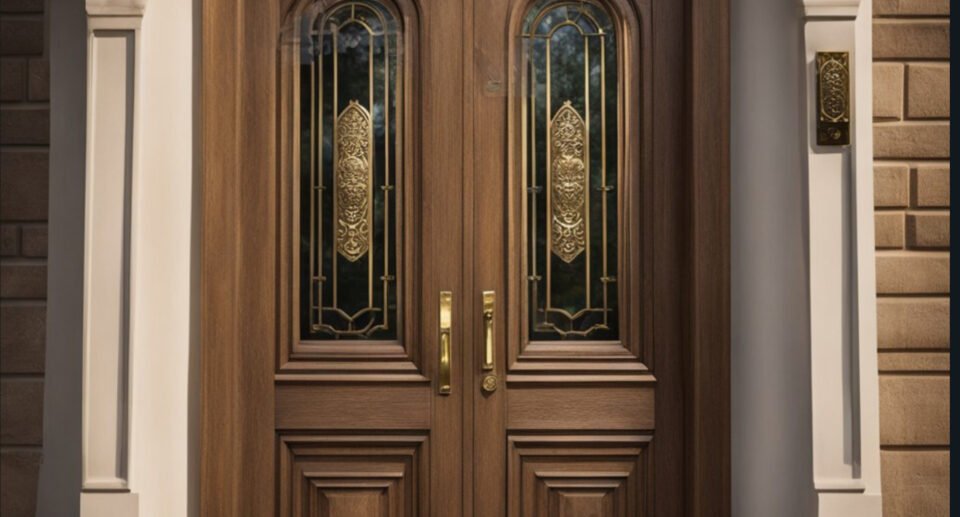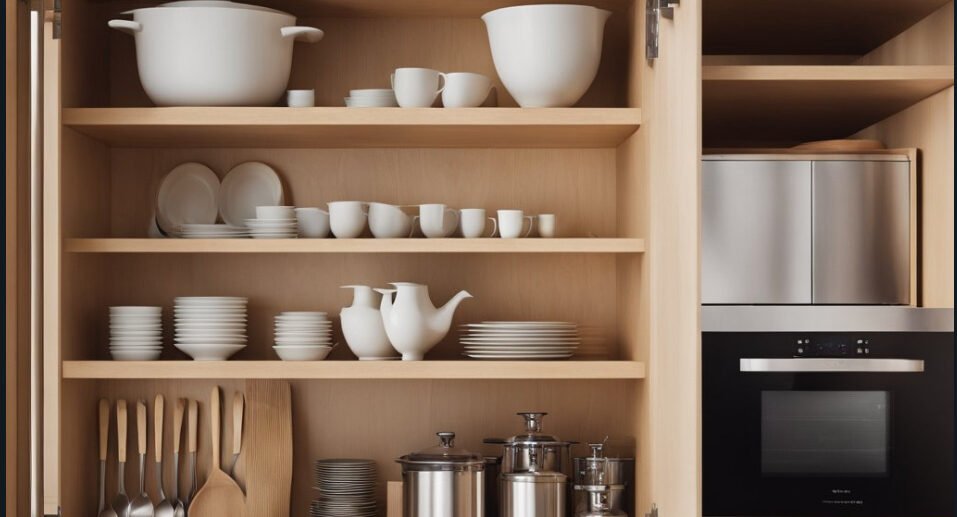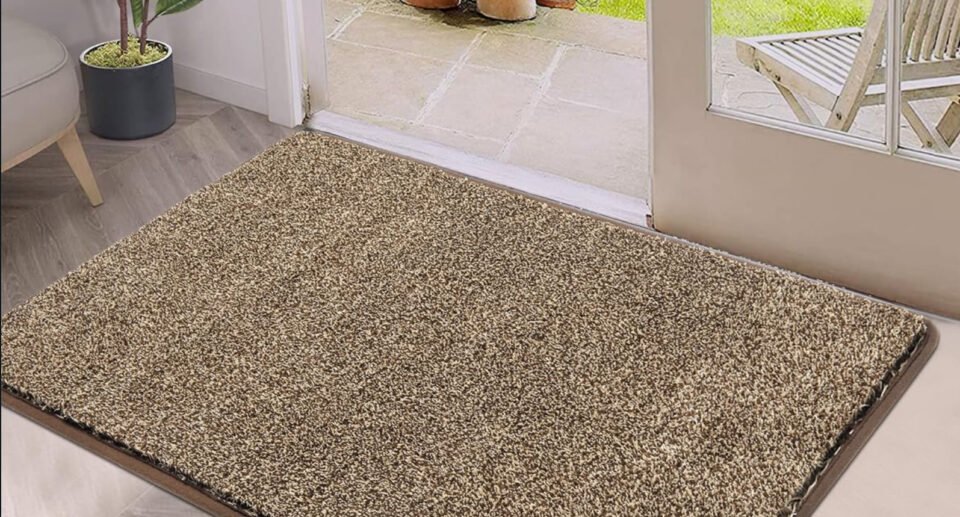Your Guide To the Best Wood for Exterior Doors in 2024?

Table of Contents
ToggleWhen choosing the best wood for exterior doors, there are several factors to consider. The material used for the door must be durable enough to withstand the elements, while also maintaining its quality and appearance over time. Additionally, the wood should require minimal maintenance to keep it looking its best.
One of the most popular choices for exterior doors is oak. This wood is incredibly dense and heavy, making it ideal for use in doors that need to withstand the elements. Oak also has a high tannin content, which provides natural resistance to insects and fungi.
However, it still needs to be treated to maintain its durability. Oak has a wide grain that looks great when finished properly, making it a popular choice for homeowners looking to add a touch of elegance to their home’s exterior.
Another great option for exterior doors is knotty alder. This wood has a fairly straight grain and a natural cherry-like hue that adds warmth and character to any home. It’s also a popular choice for rustic doors because of its burl clusters and small knots.
Knotty alder is a durable wood that requires minimal maintenance, making it a great choice for homeowners who want a beautiful and long-lasting door without the hassle of constant upkeep.
Choosing the Right Wood Species
When choosing the right wood species for an exterior door, there are a few factors to consider. In this section, we’ll explore the differences between hardwoods and softwoods, the importance of weather resistance and durability, and the role of aesthetic appeal and texture.
Hardwoods vs. Softwoods
One of the first decisions to make is whether to choose a hardwood or softwood for the door. Hardwoods, such as mahogany, oak, and walnut, are known for their strength and durability. Softwoods, such as cedar, pine, and alder, are generally less dense and less durable than hardwoods.
While hardwoods may be more expensive, they can offer a longer lifespan and better resistance to weather and wear. Softwoods can be a good choice for those on a budget, but may require more maintenance over time.
Weather Resistance and Durability
Weather resistance and durability are crucial factors to consider when choosing a wood species for an exterior door. The door will be exposed to the elements, including rain, snow, and sunlight, which can cause damage over time.
Some of the most weather-resistant woods include mahogany, oak, and cedar. These woods are known for their ability to resist rot and decay, and can offer a long lifespan for the door.
Aesthetic Appeal and Texture
In addition to durability and weather resistance, aesthetic appeal and texture are important considerations when choosing a wood species for an exterior door. Different woods can offer unique character and elegance, adding to the overall look and feel of the door.
Some popular choices for aesthetic appeal and texture include cherry, maple, and red oak. These woods can offer a unique grain pattern and texture, adding to the overall beauty of the door.
Factors Affecting Wood Door Performance

Impact of Climate on Wood
The climate plays a significant role in determining the durability and performance of exterior wood doors. Wood is a natural material that is sensitive to changes in temperature and humidity. In hot and humid climates, wood doors are prone to swelling and warping, which can cause them to stick or become difficult to open and close.
In contrast, in dry and arid climates, wood doors are prone to shrinkage, which can cause gaps to form between the door and the frame, compromising the door’s energy efficiency.
Maintenance and Upkeep
Regular maintenance and upkeep are essential for ensuring the longevity of wood doors. Proper maintenance includes cleaning, staining, and sealing the door periodically to protect it against moisture, rot, and other elements. Neglecting maintenance can cause the door to deteriorate quickly and require costly repairs or replacement.
Protection Against Elements
Exterior wood doors are exposed to various elements, including rain, wind, and sunlight. These elements can cause the wood to fade, crack, and deteriorate over time. To protect wood doors against the elements, they should be finished with a high-quality stain or paint that is specifically designed for exterior use.
Additionally, the door should be treated with a water-repellent preservative to prevent moisture from penetrating the wood and causing rot.
Comparing Wood with Other Materials
Wood vs. Steel Doors
When it comes to security, steel doors are the most secure material. They reduce street noise the best, have the longest life spans, are fireproof, and are energy-efficient. However, steel doors do not have as many design options as fiberglass or wood doors.
They also are easily dented, their paint tends to chip, and scratches can cause rust. Moreover, steel doors are typically the least chosen doors for aesthetic appeal.
On the other hand, wood doors are one of the most popular materials based on their aesthetic appeal. They offer a classic, traditional look and come in a wide variety of styles and finishes. Wood doors are generally more expensive than steel doors, but they offer better insulation and are more energy-efficient. They are also more durable than fiberglass doors, but require more maintenance to keep them looking good.
Wood vs. Fiberglass Doors
Fiberglass doors have risen the ranks and evolved as well as wood doors. Developed using polyester, fiberglass doors can be designed to mimic the look of wood grain, but are less expensive and require less maintenance than wood doors.
They are also more durable than wood doors and don’t warp or rot like wood doors can. Fiberglass doors are energy-efficient and offer good insulation. Moreover, they have a smooth surface that is easy to paint, and they can be designed to look like wood or other materials.
However, fiberglass doors are not as aesthetically pleasing as wood doors. They also have a shorter lifespan than wood doors and can be dented or scratched more easily. They are also less secure than steel doors and may not be suitable for areas with high crime rates.
Installation and Finishing Touches
Proper Installation Techniques
Installing an exterior door requires precision and expertise. A poorly installed door can lead to air leaks, water infiltration, and security issues. It is important to hire a professional service to install the door. They will ensure that the door fits properly, the hinges are secure, and the strike plate and deadbolt are properly aligned.
When installing a pre-hung door, ensure that the frame is level and plumb. This will ensure that the door operates smoothly and seals tightly. It is also important to use shims to fill any gaps between the frame and the rough opening. This will help prevent air and water infiltration.
Choosing Finishes and Hardware
Choosing the right finish for an exterior door is important for both aesthetics and protection. Varnish is a popular choice for finishing wooden doors. It enhances the natural beauty of the wood while creating a hard coating that protects it from weather and physical damage. A sealer coat should be applied first, followed by a minimum of three more coats of varnish with a light sanding between each.
Stains and oils are other options for finishing wooden doors. Stains can be used to enhance the grain of the wood and add color. Oils penetrate the wood and provide a natural finish.
When choosing hardware for an exterior door, it is important to consider both functionality and aesthetics. The strike plate and deadbolt should be high-quality and properly aligned for maximum security. The hardware should also complement the style of the door.
In addition to the door itself, sidelights and transoms can be added for additional light and style. These can be made of real wood or veneer to match the door.
Conclusion
Selecting the right wood for an exterior door is a crucial decision that can affect both the functionality and aesthetic appeal of a home.
Based on the research, a few wood species stand out as top choices for exterior doors.
Mahogany is an excellent option for those seeking a classic and elegant look. It offers a rich, deep color that becomes even more beautiful with age. Additionally, it is highly durable and resistant to rot and decay, making it ideal for outdoor use.
Oak is another popular choice for exterior doors, thanks to its dense and heavy nature. It is naturally resistant to insects and fungi, but it still requires proper treatment to ensure longevity. Oak also has a wide grain that looks great when finished properly.
Teak is a premium choice for those looking for the ultimate in durability and resistance to the elements. It is highly resistant to rot, decay, and insects, making it an ideal choice for coastal areas or other environments with harsh weather conditions.
Cedar and Douglas Fir are also great options for exterior doors. They offer natural resistance to decay and insects, as well as a beautiful, unique grain pattern.
The best wood for an exterior door will depend on individual preferences and needs. Homeowners should consider factors such as the climate, desired aesthetic, and budget when selecting the right wood for their exterior door. By doing so, they can ensure that their door not only looks great but also provides long-lasting protection for their home.

Hello, I’m Keith Jones. I’m the author and head of content here of door and window guide. I’ve been in the window and door industry for over 10 years in the UK and North America. I’ve had quite a few roles during my career mainly in Worldwide sales. I’m now semi retired so I thought I’d put my knowledge to good use educating people about all they might need to know about door and window related topics.






